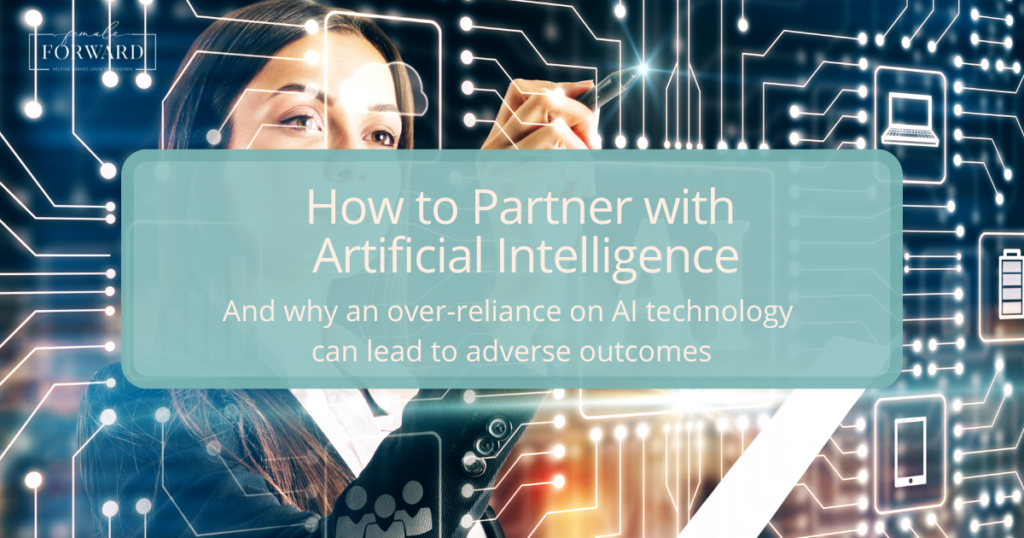
How to Partner with Artificial Intelligence
And why an over-reliance on AI technology can lead to adverse outcomes
Artificial intelligence (AI) is the dominant buzzword in the marketing world recently. Computers or software can learn, reason, and perform tasks that are normally associated with intelligence. It can help managers and marketers automate tasks, analyze data, personalize content, and optimize campaigns.
But is AI the magic sauce that can solve all your marketing challenges? Or is it a risk that can undermine your creativity and ethics?
Here are some pros and cons to consider when using AI technology as a tool for marketing, and some tips on how to use it effectively.
Using AI Tools for Efficiency
Pro: Increased Efficiency
Certain tools can process vast amounts of data in seconds, saving businesses time and money. AI can also automate routine tasks, such as sending email campaigns, creating social media posts, or generating headlines. This frees up time to focus on more strategic and creative aspects of work.
Con: Required Information Review and Potential Intervention
Depending on what you’re using AI for – you’ll need to review all of the content it creates, data it analyzes and outcomes it perceives. There can be inherent biases in the algorithms. As a marketer or business manager, you’re responsible for the words and content you create – so you’ll need to double-check the information for accuracy and objectivity.
Using AI Tools for Data Analysis
Pro: Quick and Accurate Insights
When analyzing large datasets, AI technology can provide reliable results and insights into customer preferences and trends. It can also help measure the performance and impact of marketing campaigns and provide recommendations for improvement.
Con: Concerns and Consequences of Data Quality
AI-generated results are only effective if the data that goes into them is accurate. The outputs may be misleading or inaccurate if the input data is incomplete, outdated, or biased. Managers and marketers need to ensure that they have access to high-quality and relevant data sources, and that they comply with data privacy and security regulations.
Using AI Tools for Personalization
Pro: Enhanced Personalization
Some tools can help deliver personalized and relevant content to target audiences, based on their demographics, interests, behavior, and context. AI can also help segment customers and create tailored messages for each group quickly – improving efficiency and effectiveness.
Con: Ethical Issues
AI tools pose ethical dilemmas for businesses (not limited to personalization), such as: how to balance personalization and privacy, how to avoid manipulation or deception, and how to ensure fairness and transparency. Businesses and marketers must be aware of the potential ethical implications of using AI, and adhere to ethical principles and guidelines when designing and implementing their campaigns.
Using AI Tools to Connect with Your Audience
Pro: Efficient and Extended Reach
Some tools help expand brand reach and attract new customers by using platforms like chatbots, voice assistants, or smart speakers. AI can also help optimize ads for different channels and platforms and target them to the right audience at the right time.
Con: Distraction for Human Creativity
AI can assist in content creation, but these tools don’t have true human imagination, creativity, mind agility, or cultural or social context to put the final touches on and execute a great campaign. Marketers and creators need to leverage their human skills and intuition when using AI, and not rely on it blindly or excessively.
How to Use AI as an Effective Marketing Tool
Here are some tips on how to use these tools in an effective, yet mindful way:
Start Small
Rather than jumping in with both feet, it’s a good idea to begin by testing the waters with a small AI project or tool that can help you solve a specific problem or achieve a specific goal. Perhaps start with administrative tasks such as scheduling, or follow-up emails.
Balance Automation with Human Input
While AI can automate tasks and provide insights, it’s important to remember to balance it with human oversight and creative input. Use your judgment and expertise to validate and interpret the outputs, and make the final decisions. If you run into issues with using AI tools, determine the root cause (e.g. is the input dataset accurate, or is the tool providing output that isn’t right for our audience). Identifying these roadblocks will help you to determine how to move forward in partnering with AI.
Keep Learning and Experimenting
This technology is constantly evolving and improving, so stay updated on the latest trends and developments in the field. And be willing to experiment with different AI tools and techniques, and learn from their successes and failures.
AI is a powerful tool that can help improve marketing efficiency, accuracy, personalization, and reach. But, it comes with challenges and risks that can’t be ignored. Use it wisely and ethically, balancing it with human creativity, input, and oversight. By doing so, you can harness the potential of AI to enhance your marketing strategies and outcomes.
How is your team partnering with AI technology? Send me a message today!
